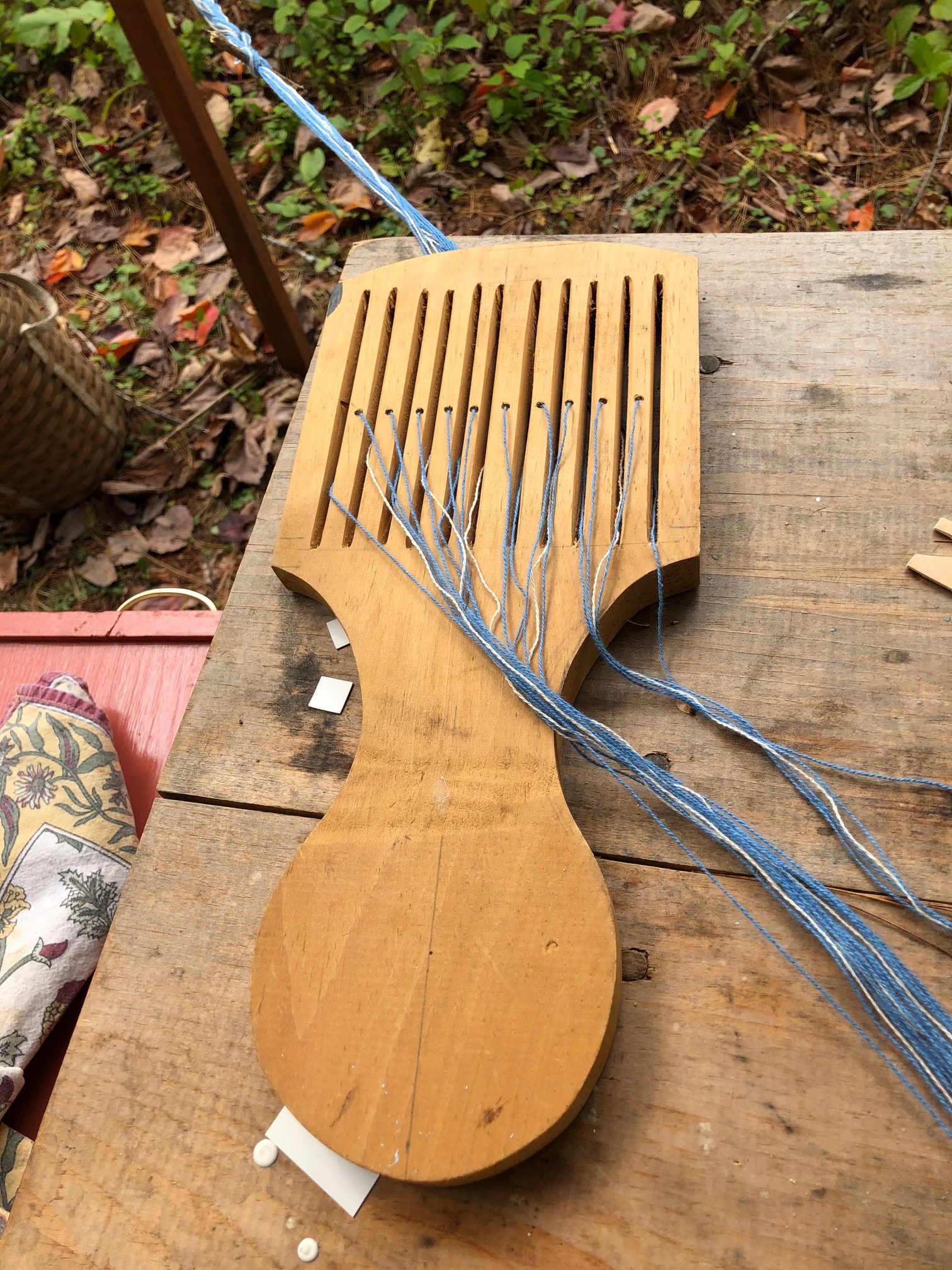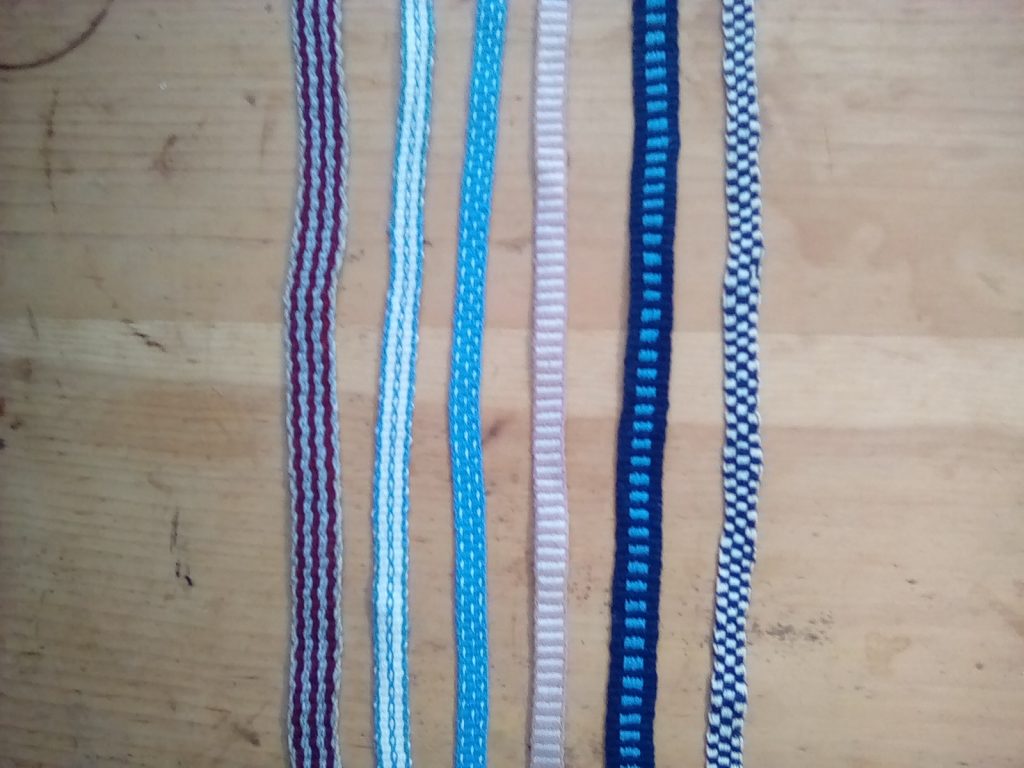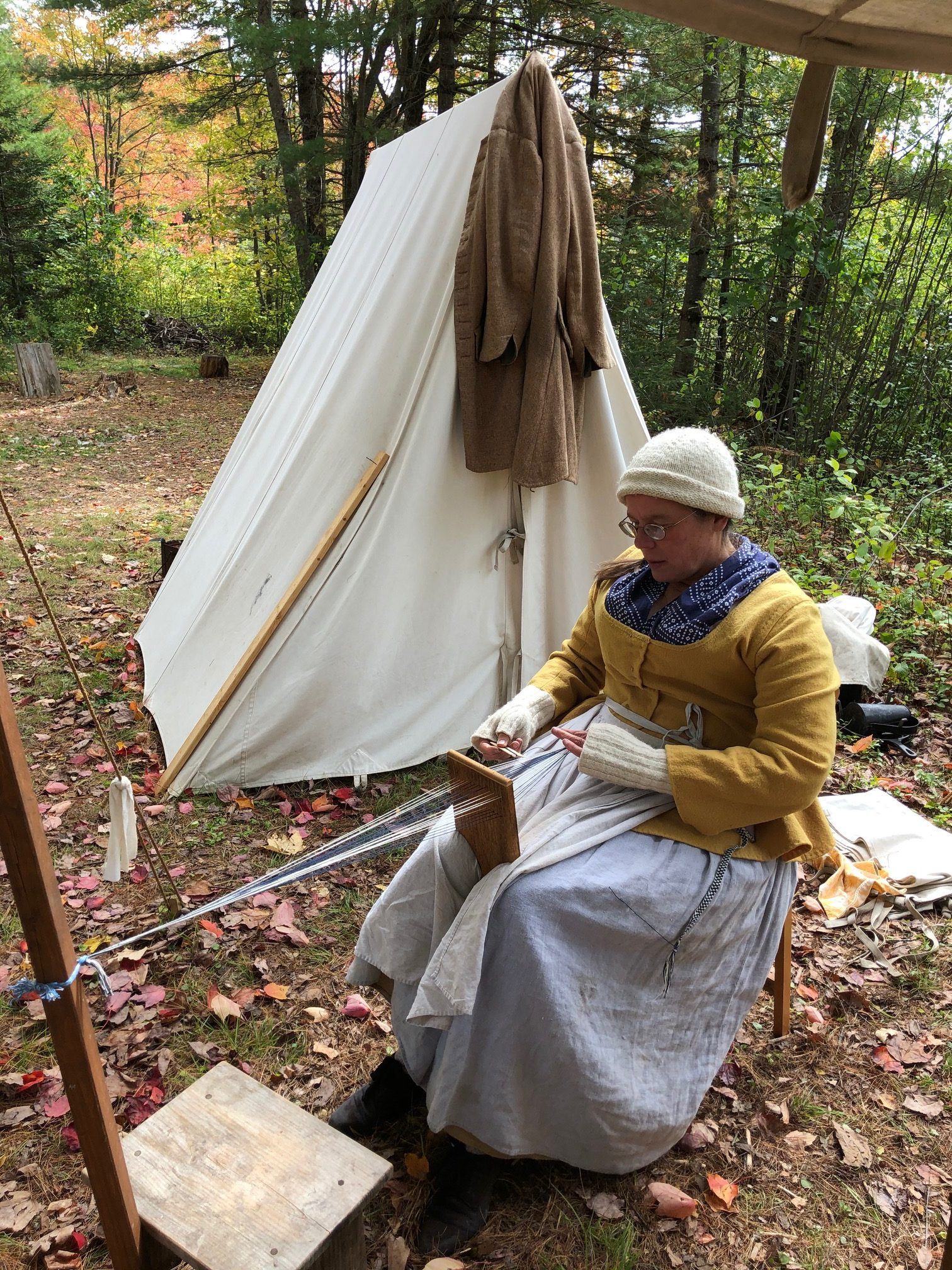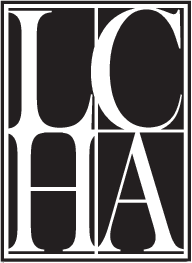Tape Loom
In the eighteenth century, women’s clothing didn’t have buttons. Instead, it was held together with pins, strings and tape/ribbons. This was partly because of fashion, and partly because a married woman were likely to have a baby every two years, and was continually changing size.
Different types of strings and tape were needed: flat so it wouldn’t dig in when pulled tight, round so it could go around odd shapes, stable so it wouldn’t stretch and get loose, springy so it would stretch and then come back like elastic.
Tape looms like this one were used to make flat tape and ribbons which didn’t stretch lengthwise or curl width-wise.

This loom is used much the same way as a “modern” backstrap loom. “Warp” threads are run through the holes and slots of the loom. Only these threads show on the finished tape, so color patterns are set up as you “warp the loom.” Dark threads in all the holes and light threads in all the slots creates crossways stripes. Dark threads in the middle holes and slots, and light threads in the right- and left-hand holes and slots creates lengthwise stripes.

The far ends of the threads are tied together and attached to a fixed object, like a hook on the wall. The near ends of the threads are tied together and either held in your hand or pinned to your belt. Hold the working end of the threads above the holes, so the threads in the slots come up, and run the shuttle of weft thread through the opening. Hold the thread ends level with the holes, and pack the weft thread tightly. Hold the thread ends below the holes, and run the shuttle of weft thread back through. Hold level and pack. Repeat until the tape is the right length.

This tape was perfect for petticoat waistbands and ties, apron strings, garters, and shoe-laces. It was also used to bind edges of clothing so it wouldn’t fray, put hair up in a ponytail, tie chickens to roasting spits, etc.
Reb Manthey, 18th Century Re-enactor with Colonial Maine Living History Association (CMLHA)

 Newsletter
Newsletter Join LCHA
Join LCHA Donate Now
Donate Now